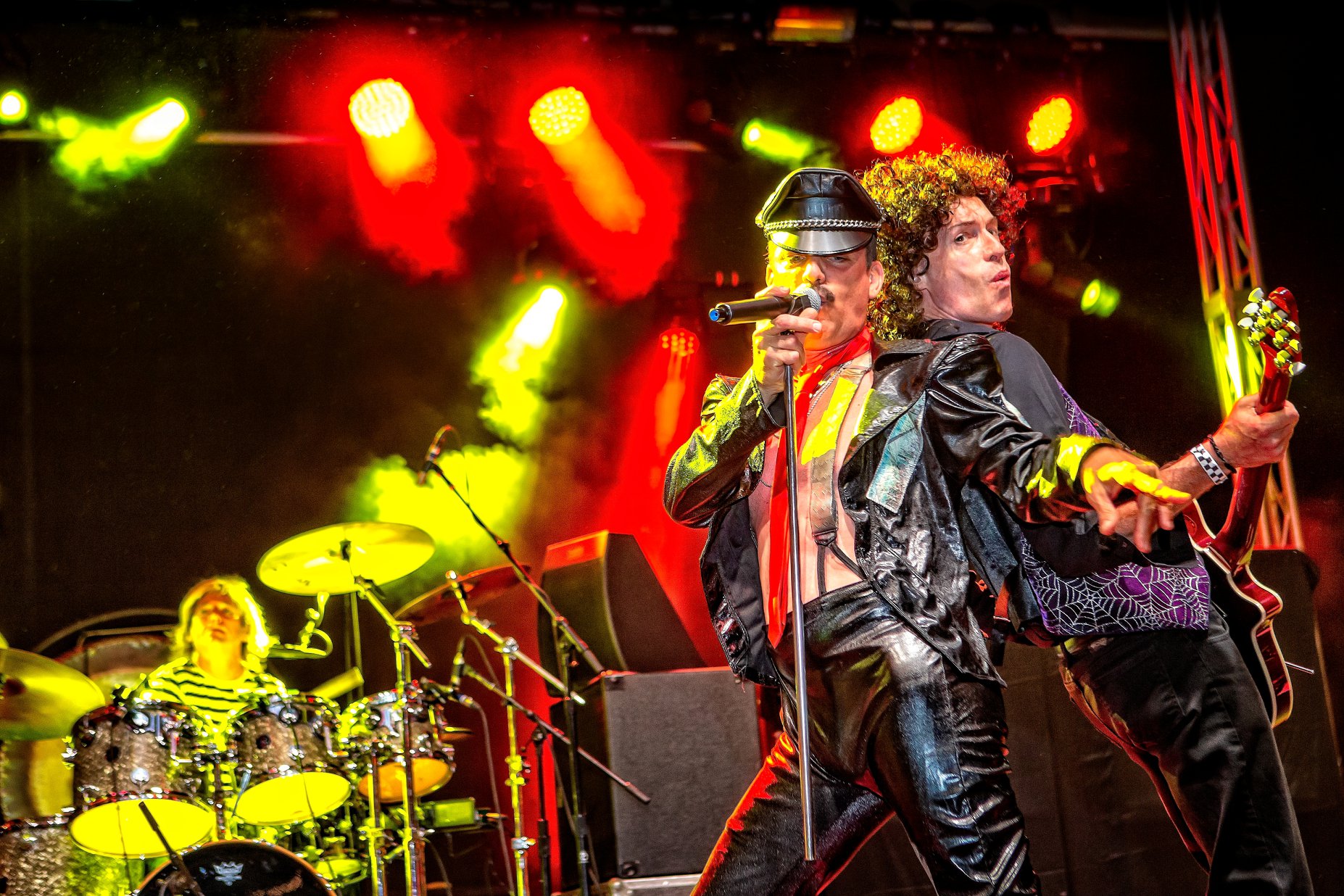
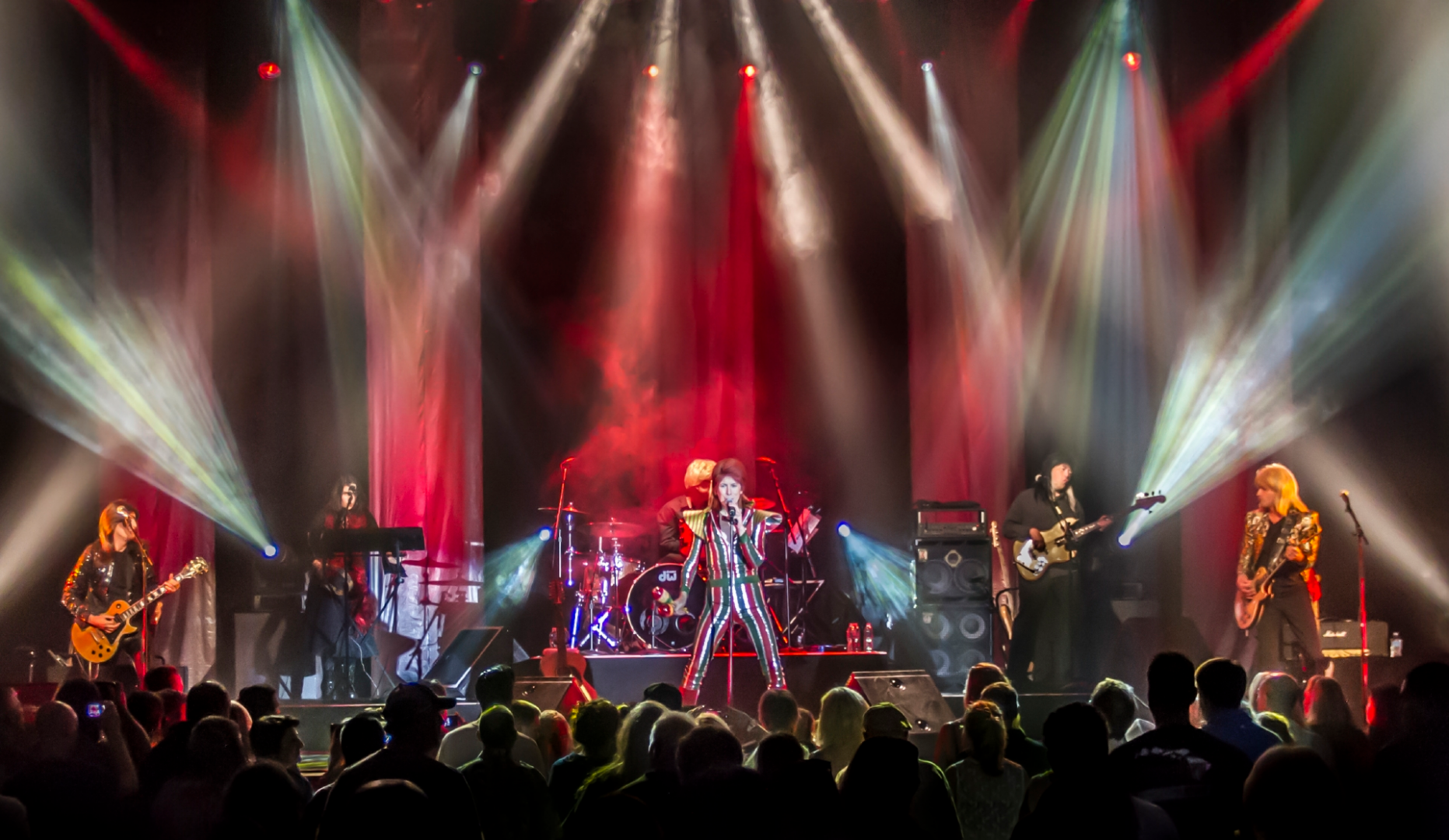
The Costume Conundrum
In the world of tribute bands, the question of whether to perform in full costume encapsulates a broader debate about authenticity versus practicality. These bands, dedicated to recreating iconic music experiences, face a pivotal decision: should they fully embody the original artists in appearance as well as sound? This choice is not merely aesthetic but deeply impacts how audiences connect with the performance, influencing everything from fan engagement to market viability. This article delves into the advantages and challenges of adopting full costumes, exploring how such decisions sculpt the legacy of music icons in the eyes of a new generation. Through examining the roles that visual fidelity and theatricality play, we uncover the nuanced dynamics that drive the success and authenticity of tribute bands in the ever-evolving landscape of live entertainment.
The Threads of Nostalgia
At the core, a tribute band seeks to celebrate and preserve the legendary status of groups like Queen by performing their hit songs with a precision that resonates with both die-hard fans and new listeners. These bands do more than cover songs; they pay a resounding tribute to the original artists, often enjoying significant success in their own right. The members of these bands meticulously ensure each riff and solo mirrors the original, maintaining the integrity and spirit of the music.
The role of costume in these performances cannot be overstressed. When tribute band members don costumes, they transcend mere musical mimicry, embodying the personas of the original band members. This transformation plays a crucial role in how audiences perceive and receive the tribute act. To witness a band that not only sounds like Queen but also looks strikingly similar down to their costumes, enhances the overall experience, creating an immersive environment that fans deeply appreciate.
Each performance by a tribute band is a creative yet calculated endeavor that involves detailed research and practice. Band members often spend considerable time studying video footage and photos to perfect not just the music but every nuance of the original artists’ performances and styles. This dedication ensures that even the most discerning fans are transported back to a time when they first experienced the magic of their musical heroes live. Thus, through their meticulous devotion to detail in both sound and appearance, tribute bands succeed in keeping the legacy of music legends alive and thriving.
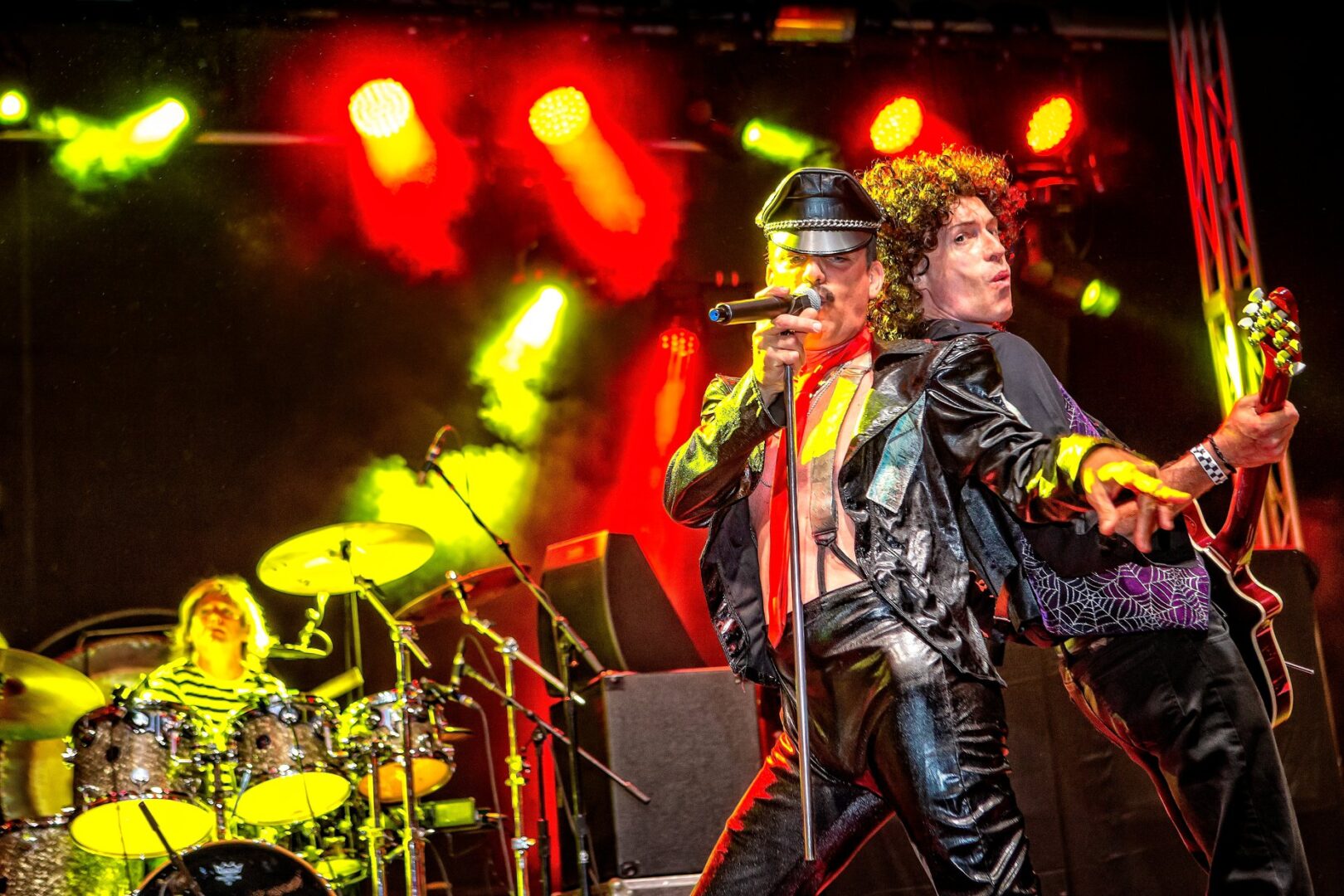
Origins of Tribute Acts
The phenomenon of tribute bands, which has become a staple in the world of live entertainment, can trace its origins back to the overwhelming popularity of acts like Beatlemania and the myriad of Elvis impersonators. These early tribute acts set the groundwork for what would become a flourishing industry, heavily relying on costumes to recreate the magic and allure of their original counterparts.
Beatlemania, which began as a Broadway musical in the late 1970s, was one of the first productions to capture the essence of a tribute performance through meticulous costume design and detailed stage personas. The show’s success was not merely due to the performers’ musical prowess but also their ability to visually and stylistically mimic the Beatles. This authenticity made Beatlemania a cultural phenomenon, illustrating the powerful role that costumes play in connecting with audiences.
Similarly, Elvis impersonators have been a significant part of the tribute scene, with costumes playing a central role in their performances. These impersonators don elaborate outfits that mirror Elvis’s iconic style, from his flamboyant jumpsuits to his distinctive hair and makeup. The visual transformation is so integral to their act that it often transcends the music itself, creating a full-fledged portrayal that resonates deeply with fans of the King of Rock ‘n’ Roll.
These pioneering tribute acts demonstrated the potential of costumes to transform a musical performance into a holistic experience that captures the spirit of the original artists. They established a model that many modern tribute bands follow, proving that the visual element of a performance is crucial in crafting a memorable and authentic tribute.
The Advantages of Costumes in Tribute Bands
Tribute bands play a vital role in preserving and celebrating the music and style of legendary bands. By fully adopting the costumes of the original artists, these bands enhance their musical performances, forging a deeper connection with the audience and boosting their professional allure. This section explores the significant advantages of utilizing full costumes in tribute acts, structured under three key benefits: enhancing authenticity, strengthening fan connection, and supporting marketability and professionalism.
Enhancing Authenticity
When a group decides to cover songs from iconic bands like Queen or adopt the style of the Beatles, the expectations are inherently high. The use of full costume helps meet these expectations by providing a visual and stylistic replication of the original band’s performances. For many fans, the illusion of reality—seeing a band that not only sounds but also looks indistinguishable from the real Queen or the Beatles—fulfills a deep-seated desire for authenticity that only a tribute wearing full costumes and wigs can satisfy.
Strengthening Fan Connection
Costumes do more than authenticate a band’s performance; they also serve as a bridge connecting the band with its audience. Fans of the original artists often hold profound memories connected to specific eras, which can be vividly recalled through visual cues like attire and stage setup. By adopting the look of a band like Queen, complete with Freddie Mercury’s signature flamboyant stage costumes, tribute bands can evoke these memories, creating a stronger emotional bond with the audience. This connection is vital for fan retention and engagement, as emotionally engaged fans are more likely to attend multiple performances and spread the word about the group.
Marketability and Professionalism
From a professional standpoint, full costumes enhance the marketability of a tribute band. Professionalism in costumes not only signifies a tribute band’s commitment to quality but also caters to audience expectations, who often measure the value of a performance by how closely it resembles the ‘real thing.’ A band that invests in high-quality costumes shows a commitment to excellence and attention to detail, traits that are highly valued by music venues and promoters. Such professionalism helps in positioning the band favorably in a competitive market where multiple tribute bands might exist for the same original band. Additionally, high-quality promotional material that features the band members in full costume can be very effective. These images are often used on social media and in video clips to attract a wider audience, thereby increasing the band’s potential to secure more lucrative gigs and possibly, embark on bigger tours.
The Challenges of Costumes in Tribute Bands
While costumes undeniably deepen the authenticity and appeal of tribute bands, several challenges can complicate their use. One issue is the risk of costumes looking outlandish or inappropriate, detracting from the performance rather than enhancing it. This can lead to perceptions of the band as insincere or overly theatrical, especially if the attire feels exaggerated or out of context.
Comfort is another concern. Heavy or elaborate costumes may restrict movement or be unsuitable for long performances, potentially affecting the musicians’ ability to play their instruments or interact on stage. This discomfort can compromise the quality of the performance, making it difficult for band members to focus on their music.
The expense associated with high-quality, authentic costumes also poses a significant challenge. Replicating iconic outfits, especially those that are elaborate or from specific periods, can be costly. This investment is often a substantial financial strain, especially for bands that are just starting or those without substantial backing.
Overheating is another practical issue, particularly with costumes made from non-breathable materials or those designed for visual impact rather than wearability. Performing under stage lights can exacerbate this problem, leading to discomfort or even health risks for the band members.
There’s also the critique of “trying too hard.” When bands invest heavily in their costumes, they may face criticism for focusing too much on appearance at the expense of musical quality or emotional depth. This can alienate purists who prefer a focus on the music rather than the visual spectacle.
While costumes aim to enhance authenticity, they can sometimes have the opposite effect. If the costumes are not historically accurate or are perceived as caricatures of the original artists, this can detract from the band’s credibility. Instead of paying homage, the tribute act may come across as insincere or disrespectful, undermining their efforts to honor the legacy of the music they perform.
In addressing the critique of authenticity in costumes, it’s important to consider the diverse perspectives within fan communities regarding what constitutes a respectful tribute. Some purists argue that tribute bands should focus on the music itself rather than theatrical mimicry, believing that an overemphasis on visual elements can overshadow the musical artistry. This sentiment suggests that the essence of a tribute should reside in the sound rather than the spectacle, promoting a minimalist approach that prioritizes vocal and instrumental accuracy over visual flair.
Moreover, the quest for visual accuracy in costumes can inadvertently lead to anachronisms, especially in bands covering artists from different eras within a single show. The constant change of costumes to match specific periods or albums can result in a disjointed presentation, where the focus shifts from the music to the rapid costume changes. This can disrupt the flow of the performance, making it feel more like a fashion show than a musical tribute, thereby diluting the immersive experience intended to transport fans back in time.
While the concerns raised about the use of costumes in tribute bands are valid, several compelling arguments suggest these challenges are often overshadowed by the overall benefits, making the concerns generally not as detrimental as feared.
Firstly, the argument that focusing on costumes detracts from musical quality overlooks the professional dedication of tribute artists. Most tribute bands are composed of highly skilled musicians who are passionate about the artists they emulate. Their commitment to musical integrity means that visual elements, including costumes, are used to complement rather than compensate for their musical performance. In many cases, the costumes enhance the musicians’ connection to the original artists, inspiring performances that capture both the sound and spirit of the music with greater depth and authenticity.
Additionally, the concern that costumes might lead to anachronisms or create a disjointed experience can be mitigated through thoughtful show planning and audience engagement strategies. Many successful tribute bands skillfully integrate costume changes into their shows, using them to mark different eras and transitions in the artist’s career. This approach not only maintains the musical flow but also educates the audience about the artist’s evolution, enriching the fan experience. Moreover, the use of multimedia elements like background visuals and narrative interludes can seamlessly bridge any gaps, maintaining coherence throughout the performance.
Regarding the financial aspect, while it’s true that high-quality costumes can be expensive, they are also an investment in the band’s marketability and professional image. Bands that present a visually compelling package are more likely to attract bookings and command higher fees, offsetting the initial costs. Furthermore, the impact of costumes on a band’s appeal can lead to greater audience sizes, more merchandise sales, and enhanced opportunities for publicity—all of which contribute to the band’s financial sustainability and growth.
Critics who argue that costumes may compensate for lesser musical talent fail to recognize the highly competitive nature of tribute bands. In this niche market, authenticity is a major selling point, and bands that cannot deliver high-quality musical performances are unlikely to sustain long-term success, regardless of their visual presentation. Audiences are discerning; they can differentiate between superficial mimicry and genuine homage, and they tend to reward those who deliver both high musical quality and an engaging visual experience.
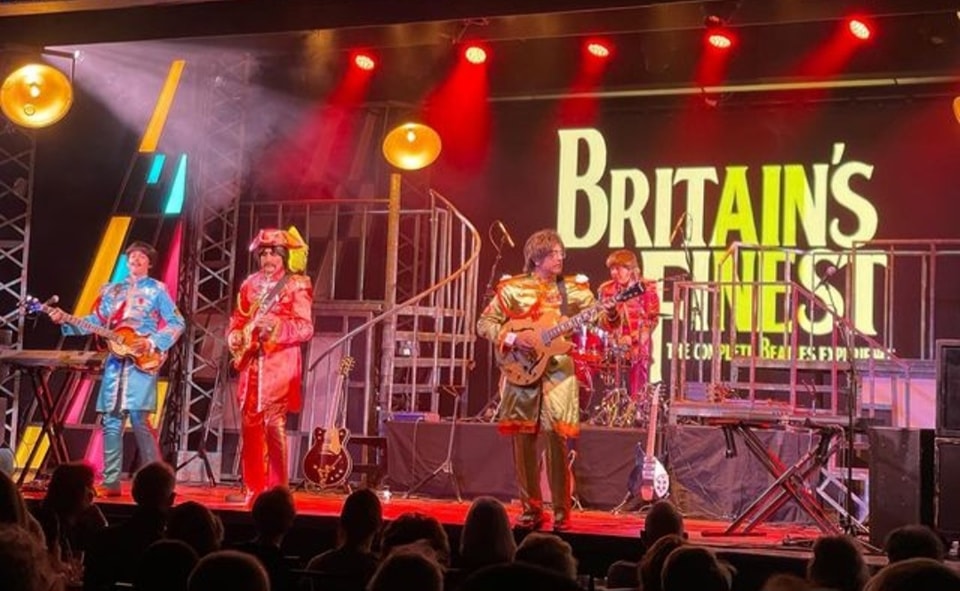
Fan Expectations and the Future of Tribute Bands
The expectations of fans are pivotal in shaping the direction of tribute bands. As audiences become more discerning, the pressure on tribute groups to deliver both an authentic and fresh experience grows. This dual expectation means bands must be adept at reproducing classic hits and evocative visuals while also engaging fans with innovative show elements.
Future-oriented tribute bands might leverage technology, like augmented reality or enhanced audio systems, to augment their performances, making them more immersive. For example, a Queen tribute band could enhance their shows with visual backdrops that recreate iconic concert scenes. Such adaptations can enrich the fan experience while staying true to the essence of the original band.
Additionally, the role of social media and online platforms in shaping fan expectations cannot be overlooked. By maintaining an active online presence, tribute bands can interact directly with their fans, gather feedback, and tailor their shows accordingly. This direct feedback loop will be crucial in informing not only the choice of music and style but also how the band members present themselves.
In conclusion, navigating the middle ground for tribute bands involves a delicate balance of preservation and innovation. The adaptation of costumes with modern touches and the strategic use of technology can help these bands meet evolving fan expectations while honoring the legacy of the original artists. As they move forward, tribute bands must continuously engage with their audience to refine their approach and ensure their performances remain both respected tributes and compelling entertainment offerings.
Final Note
Tribute bands hold a pivotal role in preserving and celebrating the music and style of legendary artists. By embracing full costumes, they not only enhance the authenticity of their performances but also deepen the emotional connection with the audience, showcasing a commitment to historical accuracy and artistic expression. This commitment ensures that the essence of iconic music remains vibrant and accessible, resonating with both long-time fans and new listeners alike.
As the music scene evolves, tribute bands must continue to engage creatively and thoughtfully with their audiences, ensuring their performances remain both respectful tributes and compelling entertainment. To those tribute bands still on the fence about adopting full costumes: consider this your call to action. Embracing costumes can significantly elevate your performance, creating a more immersive and authentic experience that not only delights audiences but also distinguishes your act in a competitive market.
We encourage you to view costumes not just as attire but as a powerful tool for storytelling and engagement. Invest in this aspect of your performance to honor the legacy of the original artists more fully, enhancing your own credibility and appeal in the process. Your active support helps sustain this unique blend of nostalgia and performance, ensuring that these musical legacies continue to enchant and inspire.
Dare to take the leap, and you may find that the rewards—increased audience engagement, improved marketability, and a stronger connection with the spirit of the music you perform—far outweigh the initial challenges. Let costumes be your bridge to not only the past but also to new opportunities in the evolving landscape of live tribute entertainment.

 San Diego’s Doves of Peace Take Flight with DC Studios and James Gunn’s Peacemaker
San Diego’s Doves of Peace Take Flight with DC Studios and James Gunn’s Peacemaker  Stop the Merch Cuts: Why Touring Bands Should Refuse to Pay Venue Merchandise Fees
Stop the Merch Cuts: Why Touring Bands Should Refuse to Pay Venue Merchandise Fees 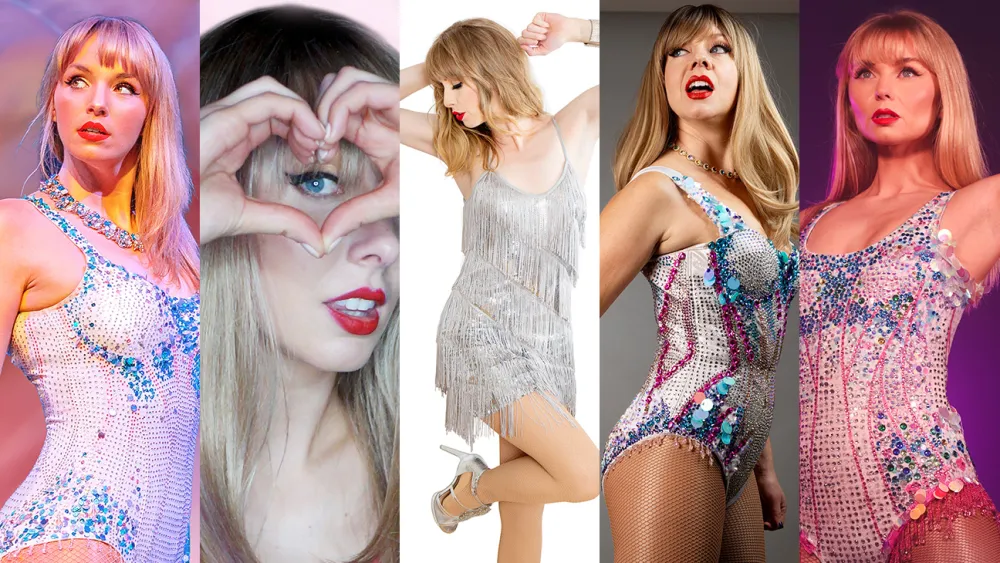 The Lucrative Business of Becoming Taylor Swift
The Lucrative Business of Becoming Taylor Swift  4 Reasons Why Your Tribute Band or Cover Band Should Be Using Vimeo, Not Youtube
4 Reasons Why Your Tribute Band or Cover Band Should Be Using Vimeo, Not Youtube